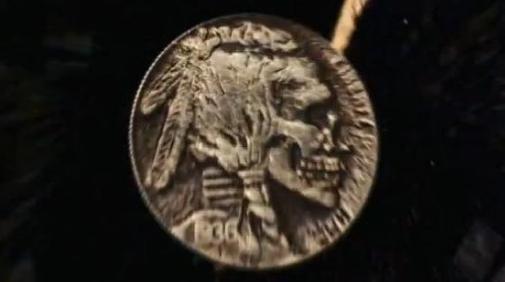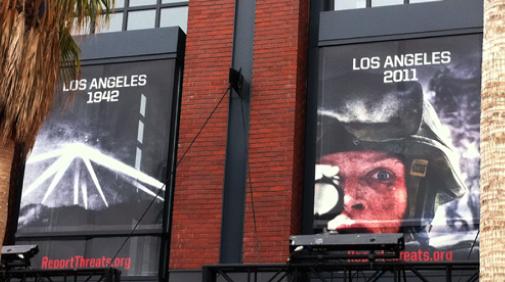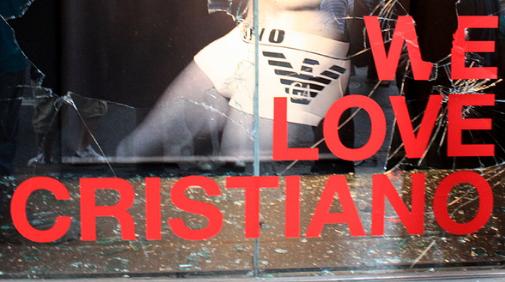Josh Trank and Max Landis Pen Gnarliest of Chronicles
Chronicle opened at number one this weekend, and domestic receipts have already surpassed production costs. There’s been a lot of talk about Chronicle being an Akira for the found-footage generation. And yeah, I guess they both feature a heavily-bandaged whipping boy who breaks out of a hospital facility and goes on an ESP rampage, if that’s what people are getting at. Personally, I see a greater resemblance to Clamp’s X/1999. But whatever. Regardless of its J-Pop antecedents, Chronicle is a concise science fiction tale that culminates in a bus-tossing battle to the death in a metropolitan area with a prominent landmark. So we’re already off on the right foot.
But Chronicle is also a study in fraternity. Three characters—Andrew, the put-upon; Matt, the ex-chasing big brother figure; and Steve, the prototypical prom king—form an unlikely bond so strong that it makes their noses bleed. The conspiratorial intimacy that is a product of this bond is of such a caliber that it’s characterized by cruising-altitude group flight. It’s really touching to watch, which is why it’s so heartbreaking to see it all annihilated when Andrew, a truly broken person, fails to harness his all-consuming rage as expertly as he harnesses his new-found power.
 Above (from left): the scion, the bitch, and the wardrobe.
Above (from left): the scion, the bitch, and the wardrobe.
Russ Fischer at /Film says some interesting things about the film’s approach to friendship here. I especially appreciated Fischer’s analysis of Steve as “the exact opposite of Andrew”. Socially, emotionally, and behaviorally, they totally are mirror opposites who suddenly find themselves with one enormous thing in common, and this specularity is succinctly conveyed through camera work and dialogue. Their specularity also makes Andrew’s eventual sense of betrayal all the more eviscerating.
Fraternity. Belonging. Documentation. Chronicle is not nearly as “subtext-free” as The A.V. Club’s Scott Tobias seems to think it is. Here’s how I see it. One of the first (and only) things that the character of Andrew volunteers about himself is that he’s shy. He lives behind the lens; for the longest time, we hear his voice more than we see his face, and when we do see his face, it’s only in the mirror, or when things outside his control (always aspiring alpha males) forcibly separate him from his camera. After forming his accidental bond with Matt and Steve, he steps out from behind the camera—but only within the confines of his small and private fraternity.
The trio repeatedly defy the laws of nature without the slightest repercussion, but the very moment that they upset the social order, all hell breaks loose. When Steve orchestrates a talent show triumph for Andrew, going so far as to play a very self-deprecating straight man to his introverted friend, Andrew finds himself in public view. And while there, a brief triumph is followed by immediate public humiliation that involves both sex and shame.
The soft sciences call this aversion therapy.
Albeit with the best of intentions, Steve has deliberately upset the viewer/viewed dynamic. The closeness that Andrew and Steve had enjoyed—at one point, Steve even calls Andrew his “best friend”—is spoiled, replaced in Andrew with distrust of Steve and his motives. And suddenly, CCTV footage starts getting woven into the fabric of a narrative that has so far been propelled only by handheld footage. For all of his ever-growing control over people and objects, Andrew has lost control of the camera. A convenience store camera views Andrew now. So does a hospital room camera, and a camera in the lobby of an office building. Surveillance footage starts to tell his story without his consent. And indeed, at one point during the final battle, Andrew is floating outside the observation deck of the Space Needle, surrounded by digital cameras, iPads, and camera phones, all sucked away from onlookers. It’s only a matter of time before you cross the Rubicon with this sort of instability, and then of course things can only end badly.
No good can come out of upsetting the viewer/viewed dynamic. Which is what this film is about.
 Fig. 1. An assortment of skulls.
Fig. 1. An assortment of skulls. Fig. 2. Hobo nickel.
Fig. 2. Hobo nickel.



 Britta’s doing it wrong.
Britta’s doing it wrong. Evolution.
Evolution.














